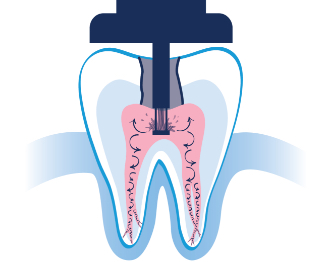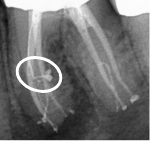Patient-Centered Root Canal Treatment Technology
We developed the GentleWave® Technology in pursuit of improving the efficacy and efficiency of root canal treatment (RCT), as well as the patient experience. For well over a century, RCT has depended primarily on files to manually remove infected tissue and tooth structure from inside the tooth. Files, however, have limited reach inside complex root canal anatomy4 and can leave behind infected tissue3 and bacteria, leaving the tooth susceptible to reinfection.
The minimally invasive1 approach of the GentleWave Procedure minimizes manual instrumentation1,3 and instead utilizes a powerful vortex of procedure fluids3 and acoustic energy that cleans the deepest, most complex portions of the root canal system.1,3

 Patient-Centered Root Canal Treatment Technology
Patient-Centered Root Canal Treatment Technology
